If you want to justifiably increase prices, you need to demonstrate how you’ve added value for your customers. You could increase value in a tangible way e.g. making your product with higher quality materials OR you could increase the ‘perceived value’ of what you offer.
Rory Sutherland says that increasing the ‘perceived value’ can be just as effective as increasing the tangible value.
A higher perceived value = people are willing to pay more, allowing you to increase prices. In this episode, you’ll find out exactly how to implement all of the above (plus some amazing examples) so that you can increase prices.
0:00 – 1:41 Introduction
1:41 – 4:07 Who is Rory Sutherland?
4:07 – 5:50 The amazing Eurostar example (Caviar and champagne)
5:50 – 7:59 Kebab and Taxi
7:59 – 10:32 Marketers’ Superpower
10:32 – 14:04 It’s your emotions
14:04 – 18:31 The power of Perceived Value
18:31 – 20:38 Tesla Example (Vegan Leather)
20:38 – 23:35 Communication is key
23:35 – 24:39 The water bottle example
24:39 – 25:32 Outro

Pat 0:00
Hi, Pat the podcast editor here. The perceived value may not be a term you’ve heard before but rest assured after this episode, it will become your number one tool for increasing your prices. You’ll hear real-world examples of how perceived value can help your business.
Dan 0:16
The Eurostar 2003 invested millions in improving the tracks and making the train 20 minutes faster from London to Paris, they could have invested a lot less in making the quality of the journey better or installing Wi-Fi or entertainment systems.
Lloyd 0:32
And Lloyd shares his issue with taxi drivers?
Dan 0:37
You’ve ordered a taxi, what concerns you about…
Lloyd 0:40
I can’t take my kebab in it. It happened last night and the driver said I smelled like shepherd’s pie, but it was a kebab.
Pat 0:48
Right? Let’s get stuck in. Notepads at the ready! This is episode 111 of the business anchors podcast.
Lloyd 1:07
Dan, why are we doing an episode about people charging more when we previously slated people for saying people should increase their prices?
Dan 1:15
Well, that’s a good question. I still think it’s shitty advice to just tell everyone to charge more. I think this is something we’ve seen a lot ‘just increase your prices. So, I recently watched it and I please, I recommend you all watch this.
Lloyd 1:40
‘I Please, I recommend you watch this’
Dan 1:41
Shut up.
Lloyd 1:41
Okay.
Dan 1:41
Rory Sutherland on the diary CEO podcast is one of the best pieces of content I’ve consumed in a long time. Throughout this whole, two-hour podcast, his key message was about perceived value and the importance of perceived value and how increasing the perceived value of your products and services can allow you to charge more.
Lloyd 2:06
Nice.
Dan 2:08
So yeah, I guess like, if I was to say to Lloyd, how do you provide more value? As a company, do you need to provide more value to be able to charge more? How would you go about providing more value?
Lloyd 2:23
Either improving the quality of the work you’re delivering or the products you’re delivering in some way. Or improve customer service in some way I guess or like reducing bad things like reducing wait times or reducing, like negative parts. That would be where my brain would go.
Dan 2:45
Yes. That will be where I would go as well to listen to this episode.
Lloyd 2:49
Okay, well I haven’t listened to it yet that’s why I’m going there.
Dan 2:51
You’re talking about increasing the value in terms of tangible things of a product or service to be able to charge more? Yeah, so like you said, increasing the quality, like making whatever you do provide better results faster, and that kind of thing, like, but he talks a lot about perceived value. So you can increase the value of your product or service by changing the way people think about it. Okay, so as I said, you can think about this, like us at Knowlton, just trying to be Meta again on the podcast. If we got better at changing the way people think about the same products or services we provide, we could charge more without changing anything. Like if we get better, demonstrating and showing the value people get from working with Knowlton, we could charge more rather than having to, Increase the quality of what we’re doing by heart by getting better equipment and that kind of thing.
Lloyd 3:52
Obviously, as a separate thing, it’s always going to be positive to improve what you’re doing but you’re saying, improving how people feel about what they’re getting from your product or service can also do that without actually having to…
Dan 4:06
Yeah
Lloyd 4:06
Right.
Dan 4:07
And in this podcast episode, he’s like just such an interesting guy to listen to, because every point he shares and you’ll get this when you listen to the episode, he provides some really interesting examples to back up his point. So one of the really interesting examples he shares is to do with Eurostar. So Eurostar in 2003 invested millions to develop HS1 to decrease the time it took to get from London to Paris, right?
Lloyd 4:26
Yeah
Dan 4:31
Millions and millions and millions of pounds to reduce the time it takes to get from London to Paris by 20 minutes. Obviously like, that’s good, right? People want to get places quicker. However, he gave a really interesting example he was like, rather than trying to make the journey quicker by improving the train speed through things like better tracks and better quality trains that can get there faster. He said, Why don’t you invest that money in improving the quality of the journey? So that people don’t mind it taking longer?
Lloyd 5:17
Yeah.
Dan 5:18
Right. So he gave his funny example of like, rather than investing those millions in improving the tracks and stuff, for much less, you could hire all of the best models in the world and get them to serve caviar and champagne on the journey, instead of investing those millions of millions of pounds.
Lloyd 5:39
That’s interesting. So you’re just making the journey good and then people are like, this is an excellent service, rather than keeping the journey just boring and doing what it’s supposed to do and being shorter.
Dan 5:50
Yeah, exactly. Another interesting example he shared is right so taxis, so let’s play this out, Lloyd. Tell me when you order a taxi.
Lloyd 5:50
Yeah.
Dan 6:02
Tell me what’s shit about it. You’ve ordered a taxi and you’re trying to wait for it. What? What? What concerns you about it?
Lloyd 6:12
I can’t take my Kebab in it.
Dan 6:14
Yes. Okay. Can’t take your kebab in it.
Lloyd 6:17
It happened that night and the driver said I smelt like shepherd’s pie but it was a kebab.
Dan 6:24
Yeah, right but what else? more relevant things?
Lloyd 6:27
More relevant? is to like more people who don’t have kebabs. What’s rubbish about it? Like waiting around, You don’t necessarily know when it’s gonna come. So it’s hard to plan?
Dan 6:39
Yes, Lloyd. That’s the answer I wanted.
Lloyd 6:41
Okay, not the shepherd’s pie?
Dan 6:42
Not the shepherd’s pie. So the uncertainty of not knowing when your taxi will arrive is the shitty part about ordering taxis. If you think about it like, I don’t know if you experienced this, you order a taxi. Sometimes they say, it’ll be five minutes, and it’s five minutes. Sometimes they’ll say, it’ll be five minutes and it’s an hour. So the uncertainty of thinking like, I gotta wait for this taxi, when do I go outside? I don’t know if I’ve got time to quickly have a shower or go to the toilet because it could be five minutes or 40 minutes.
Lloyd 7:12
Trying to make plans with friends and people traveling with you and you can’t do it so
Dan 7:17
Then Uber was invented. So what Uber did was, it took away that uncertainty, it allowed you to see exactly where that taxi was on your smartphone. So you knew if it was 15 minutes away, and you had time to have a shower, or you know, if it was an hour away, and you had time to sit down and have a nice drink. And you can see like, Oh, I’m not going to go outside yet. Because I can see it’s on that road, which is 15 minutes away, I’m going to chill for a bit longer. Even if it took an hour. That’s fine.
Lloyd 7:45
I was just gonna say that. So even if you’re waiting longer than you would have done. It’s the perceived value that you’ve got, it’s still better for you because you know when so you can build your activities around it so that it works out.
Dan 7:59
Yeah, the thing Rory Sutherland speaks about which is really interesting is these psychological reframes of a situation are marketers’ superpowers. You don’t need to invest millions in making your train 20 minutes faster. You can just think of the person who’s sitting on the train, what can you do to reframe that situation? So they’re not thinking it’s a shitty journey, that they’re enjoying the quality of that journey.
Lloyd 8:27
Like providing entertainment systems and stuff. You know, like some airlines, especially long haul flights, there’ll be like loads of games you can play and stuff that’s one of those things is like, well, we’re not going to invest billions in planes that will be faster but, we are going to let him play chess with his brother who’s in the seat the other side of the plane on this games console in the seat or whatever.
Dan 8:50
He gave another example, which is interesting. He talks about how when you get a plane somewhere, you know, there are two options when you land, there’s either you get that cool pod thing that attaches to the plane, you can nicely walk and you’re like in the terminal, or you get the buses.
Lloyd 9:08
You go down the steps and go outside.
Dan 9:09
Whenever anyone sees the buses coming, it’s like a shitty experience. You’re like, oh my god, so I’ve got to get the buses to the terminal and stand there. It’s cramped. He said something, I am going to say the plane driver then, a pilot did once on his journey, which completely reframes the situation as when they landed before the buses came. He said I’ve got some good news and some bad news. The bad news is we’ve got buses instead of the pod thing. The good news is the buses actually take you directly to your terminal. So you don’t have to have that long walking journey and he thought, ‘Oh, great. We’ve got the buses’ because that plane driver and pilot, reframed the situation, it completely changed the way he felt about it. The thing with marketing and customer experience is all to do with emotion and how we feel. So if you can change someone’s emotions from a negative, shitty emotion to like ‘Ah, that’s good. We can get the buses, I mean, get directly to the terminal’ it completely changes the way people think about your company, your brand. I think as marketers, we need to be like learning these lessons and even when watching it I was thinking, how can we reframe what we do at Knowlton to be more positive?
Lloyd 10:32
Do you want to hear one thing that I think we do, how we changed perceived value for our customers already?
Dan 10:38
No.
Lloyd 10:39
Okay…
Dan 10:39
Yeah, I do!
Lloyd 10:43
Sometimes customers want things faster. So, they want us to complete a project faster than we kind of think we should if you know what I mean. Earlier in my career, when that happened, I would kind of try and just say, look, you know, it’s hard for us with the resources to get it done that quick. So we’ll try but you know, it might take longer and, and now, this is actually the reality but now, when I communicate this, I say, to be able to do the best job we can for you, we want to put in this time that will make sure we have the time to do the whole creative process and everything and that’s the truth. Yeah. Before I wasn’t communicating that. So it just seemed like, Oh, it’s my guess, oh, they can’t do it that fast. That’s not great. But now when actually, I communicate, it’s because we are trying to do the best job we can for you and we don’t want to skip elements of the process to try and do it quicker. You might get the marketing campaign live two weeks earlier. It’s 25% worse and 25% worse.
Dan 11:55
This is the clever thing. So now our customers want it to take longer because they want us to put in the extra time to do a good job. After all, you’ve reframed that situation. So interesting.
Lloyd 12:06
A clip from the podcast I’ve seen, so I haven’t listened to this Rory Sutherland podcast yet, but I saw a clip somewhere. He talked about the NHS and waiting times. He said he would change it to preparation time. So at the moment, it’s like a waiting time for them I hip operation is like 12 months, or whatever it is, and people that oh my god, that’s so bad, you gotta wait that long and he said a lot of operations if you changed it from waiting time to preparation time, he said there are things you can do while you’re waiting to increase the likelihood of success in the operation.
Dan 12:47
Yep.
Lloyd 12:47
This might not be medically correct, so if you’re a doctor, Ignore me, but say if you’re a stone lighter, it might mean that you’re recovering from the hip op, you’d be able to get on your feet quicker because there’s less weight that they could say, right, the preparation time is 12 months, if you reduce your weight by one stone and if you get more active and build up the muscles around your hip before we do it, the likelihood of success would go up 20%, then you’re like ‘oh, yeah, I’ve got this 12 months preparation time and I’ve got the chance of it being 20% more likely to be a success
Dan 13:21
Completely changes the way you feel about that situation and this is the thing again like it’s your emotions. Rather than being like, This is shit, I’ve got a waiting age as you think this is great. I can prepare and get a better result. It’s so interesting how you can change the way people feel.
Lloyd 13:36
But also it changes the perceived value and the actual value in a situation. The perceived value is like ‘Oh, this is much better but you’re using that as an opportunity as well. I’m saying oh, it genuinely is because if you do this stuff, it will give you a better result. That’s the same. In our case, like I was saying, just communicating the reality of like, we don’t want to have a shorter time to brainstorm ideas, we don’t want to skip that third creative meeting and only do two. We want to do all of that to get a better result.
Dan 14:04
Something I think every listener or watcher of the podcast can do. As a marketer or a business owner you can implement today to increase your perceived value by showing the work that goes into providing your product or service. Something that’s been a game changer for us as a marketing agency. For example, on video shoots is creating BTS or behind-the-scenes content that shows you, like we do a series now called inside Knowlton where we specifically have someone from our team produce behind-the-scenes content, showing our team and action, showing them on a shot showing them all of the work that goes into producing that 60-second video because like even today, a lot of people think oh, yeah, can I have a one minute video? Yeah, just make the video. It’s not that simple. You have to write all the scripts source actors source location, source props, do various revisions of that script, present and communicate with the client, make any relevant changes, and then actually shoot the content, you know, across multiple days, edit the content, or the post-production, sound design, colour grading, there’s so much that goes into making what you just see as a 60-second video, if you can show that to your customer, before they invest in working with you, then the perceived value increases. Even if you manufacture pens, somebody looks at a pen and thinks that’s just the pen. If you show the craftsmanship that goes into like hand making that pen, all the work that goes into designing it, they think like, wow, like all the work that’s gone into making that pen, I now perceive that that’s worth paying double as much for because of all the work that’s gone into it.
Lloyd 15:47
That’s why smaller producers of stuff, like people on Etsy, I think can charge, some of the price on Etsy I look at and I think it’s crazy but because they kind of show you that this has been made by hand by one person, and then like, your perceived value of that table is higher because you like this isn’t just something that comes out of an Ikea factory. I can see how they’ve made this and put all this time into it so your perceived value is higher. I think that’s common. We used to kind of ask clients, Oh, do you want to be on the show or not, and just kind of leave it for them to decide. Now we ask our clients that we work with from the UK. So sometimes the international ones we understand they’re not going to come over for the shoot. If they’re in the UK, we say ‘Oh, can you can you please be on set’ because we know that when they see that they’re a crew of 17 people and they see all the equipment that we’ve invested in to make sure that we produce the best thing we can for them, the perceived value is higher than if they just see the end product. They know it’s good and they’re like, Okay, that’s good, but they don’t understand what went into it for all they know, there’s just one, one girl behind the camera, just operating the camera on her own and that’s the resource that has gone into it when they see all the effort. Then they understand because of your product or service, your customers probably don’t understand how you do what you do, they just want the result. So once they understand the work, the expertise, the financial investment into equipment, or whatever goes into it, the perceived value is so much higher.
Dan 17:24
Other ways that you as a listener can implement this with your company like we now go into the effort of producing these highly produced behind-the-scenes videos, which takes a certain amount of resource. We built up to that, you could do a text-based post on LinkedIn, talking about the process you go through with a customer from them getting in touch with you to delivering whatever it is you deliver, your accountancy services or your product or you could take a photo of you like designing your little Etsy product showing and then and then doing a post like, this is part of the process I go through when at designing any product for my range. I do this research then I do this and I did that. You could quite easily create any kind of content just talking about that process. I think that’s one of the key takeaways from this podcast. You may be listening to thinking like, yes, these examples of Eurostar and that are great, but how do I do this? You demonstrate the work that goes into producing your product or service. That’s the biggest thing. Another really interesting example…
Lloyd 18:29
I was going to say, have got any more examples?
Dan 18:31
So Tesla, okay. Tesla has plastic seats… So you’d think of plastic seats? Okay, great. It’s the plastic seat. Do you know what they call them?
Lloyd 18:45
No.
Dan 18:46
Vegan Leather. They’ve reframed something that would just be seen as a bog standard plastic seat to something that seems appealing. In 2022. Yeah, having vegan leather in your car,
Lloyd 19:02
It’s so simple, isn’t it? But so clever. I think something that is an example that I have seen a lot. I think both Samsung and Apple have done this; they’ve shot movies on their phones to demonstrate how good the camera is. The reality and I think that does make lots of people go oh my god, it’s good enough to shoot a movie live. That’s great. The reality is, that I’m not going to shoot a movie on my phone. That’s not valuable to me, because I’ve seen that it can be done. I perceive that value. Oh my god, that must be amazing. Yeah, I’m gonna buy it.
Dan 19:39
That made me think of iPhone cases. Have you seen the videos where they go up to the top of a skyscraper and lob it off? And then it just goes on the floor and it’s like, it’s fine? Like you’re never gonna lob your phone off a skyscraper. It’s demonstrating what that can withstand.
Lloyd 19:57
One of the most widely used versions of this as well. Is the drive-through. So when I was younger and drive-throughs were a thing. There was one window that you ordered at you then waited there and then you paid there, you’ve got your food there. So it feels like you’re waiting for quite a long time. Now because half of these drive-throughs, now you have that 12 windows, go to the next one and say ‘hello’ to that one, and then go to the next one and then by the time you get to that Window, it’s there immediately. Yeah, wow but it’s the same time, but you’ve just gone through and paid one guy.
Dan 20:38
In a way, a weird version of that is to do with communication. If you get good at communicating to your customers, about what step they are in the process, they’re going to feel much better knowing the journey and knowing where they are. Whereas if they’re like, Oh, I haven’t heard from them in a while, like what’s going on? Well if they think I’m in phase two of this thing that’s going to take six weeks, that’s fine, they’ve communicated and I think this is something we’ve got better as an agency as we never used to communicate anything to our customers…
Lloyd 21:09
We were just like, we know we’re doing good stuff. So they don’t need to know what we are doing as we’re doing what we are supposed to do and it’s going to be great.
Dan 21:16
Something we do more recently, like positive reinforcement. So whenever our campaigns are running, and we see either someone commenting, this happened this week, I shared one of our client videos and someone commented on it saying ‘I love this ad’ when I saw this, I invested in this service and it’s like quite a high-value service. I instantly tagged the founder of the company who we worked with, like, hope you see this, and it tagged him and then it’s the small things that are thinking that’s a worthwhile investment.
Lloyd 21:52
I do the same quite often if I see outstanding results. So if we might have a campaign for lead generation and we create a lead from a massive business, that could be a massive opportunity or a really big sale that’s much bigger than others for products or whatever. I make the effort to email or slack or WhatsApp, my contact at that client and just be kind of like, oh great result yesterday with the lead from whatever or like Oh, great to see that there was that 700-pound order yesterday. They will see that. So really, it’s like why am I doing this extra communication, but the perceived value, you’re just putting more positive stuff in front of them more times.
Dan 22:40
Doing that for us is worth hundreds of 1000s of pounds because there are some customers that we do that to that have been with us for years and years and years. After all, we’re constantly showing them why it’s worth working with Knowlton. Even if just behind the scenes, that stuff was happening and we were just like, that’s great. That wouldn’t be as effective as constantly, over the year showing like, look, this is why it’s good working with us.
Lloyd 23:06
I was gonna say sorry, I think previously, we’ve lost customers because they didn’t perceive the value to be high enough. It was just because it wasn’t that we weren’t doing great work. We just weren’t communicating with them that we were doing it. I think that’s been a big change. Now our communication is so much better, they can constantly see the value. So they want to work with us in the future. They didn’t they do not doubt the value. It’s interesting how communication with customers affects perceived value in such a massive way.
Dan 23:35
Just one final example. There was a viral post that went viral on LinkedIn a little while ago about the water bottle. Have you ever seen that?
Lloyd 23:42
No.
Dan 23:44
So this post loads people copied it and it was a thing but someone’s saying a water bottle in Tesco is worth 30 P or whatever it is. A water bottle in an airport is worth two pounds. For example, I went out to Ibiza a few years ago, a club called high and I better It was 10 pounds for a water bottle but you kind of just think although like it’s annoying and that shit, in your mind, you’re like ‘Oh yeah, I’m going to an expensive club’ and Ibiza water what’s going to be a tenner? If you saw a water bottle for a bottle of water for a tenner in Tesco. You would go mad because it’s like what on earth?! whereas if you’re in a premium club in Ibiza, you are like ‘oh, yeah, it’s a tenner. It’s interesting how different situations perceive the same thing as different.
Lloyd 24:39
I enjoyed that one. Thank you. So Dan, just the podcast episode that inspired you. Where can people find that one?
Dan 24:46
Go on YouTube and search ‘Rory Sutherland the diary of the CEO’ and yeah, just definitely go and listen to that because it’s so interesting.
Lloyd 24:56
Then after that listen to every Business Anchors podcast episode that you haven’t listened to.
Dan 24:59
Maybe before that?
Lloyd 24:59
Yeah, before that. There are 111 so just make sure you don’t move on to another podcast until you listen to absolutely every one of them.
Dan 25:08
And then become a customer of Knowlton.
Lloyd 25:10
Please. A good call to action?
Dan 25:15
Be a customer.
Lloyd 25:17
Okay, so shall we see you in your ears next week?
Hopefully, this episode has given you an insight into how you can justifiably increase prices! If you have any more questions, then why not start a conversation with us here at Knowlton.




























We've always wondered if anyone actually looks at the footer on websites. We don't think many people do. So if you're reading this... You're special.
Knowlton HQ, Unit 62 Maple Leaf, Manston Business Park, Ramsgate, Kent CT12 5GD
© 2024 Knowlton | UK. All Rights Reserved.